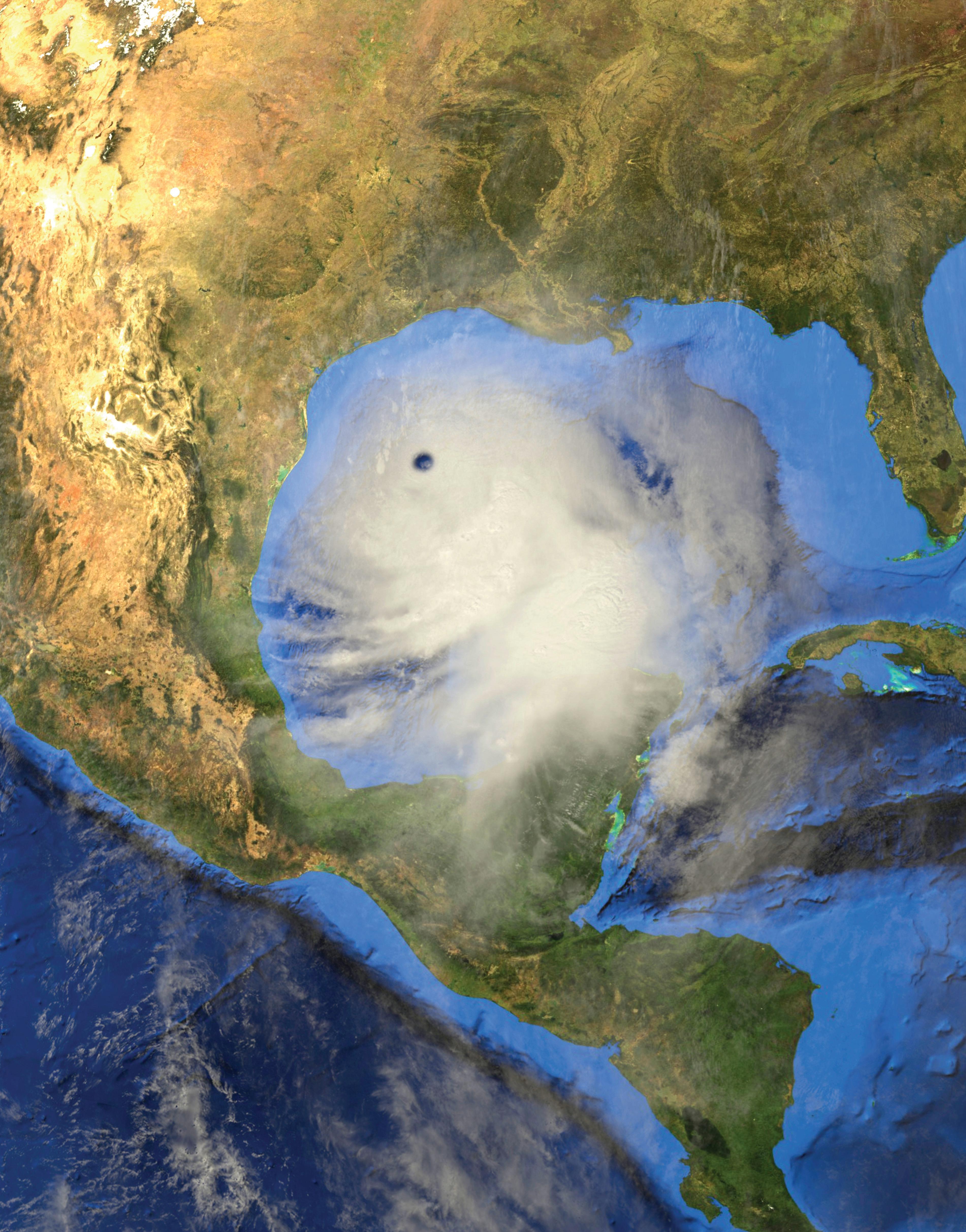
















Make sure you and your family are prepared for the 2025 hurricane season Page 20








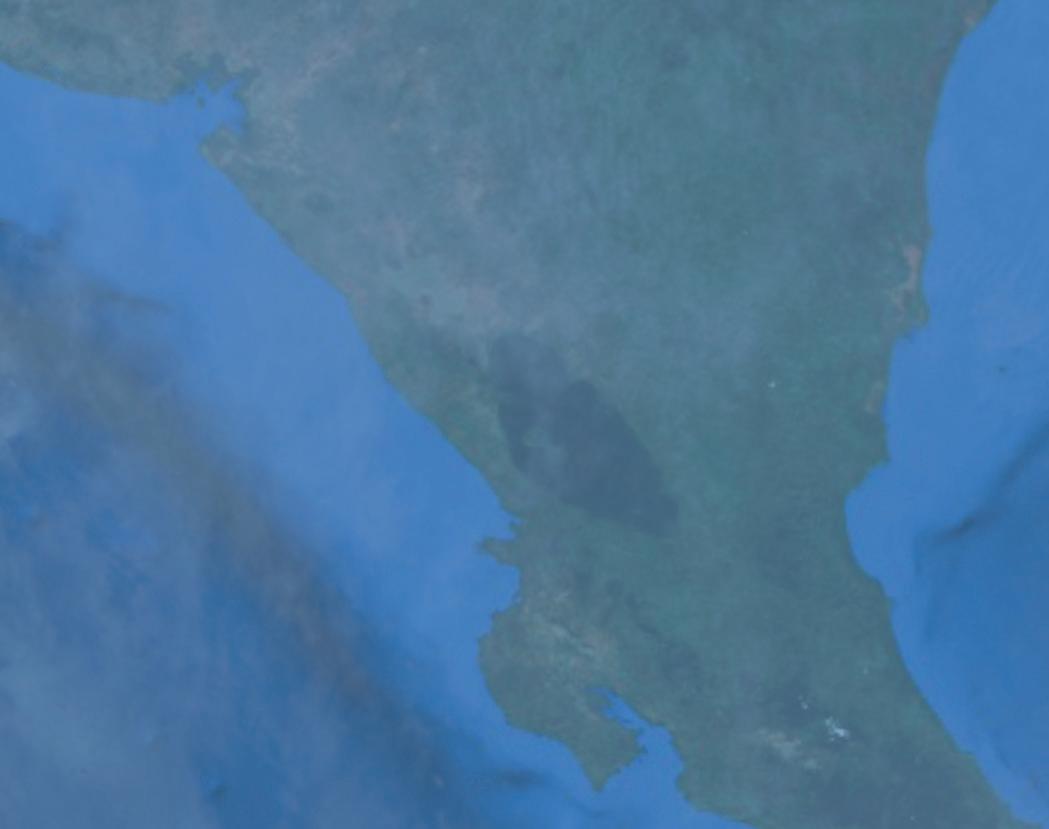

















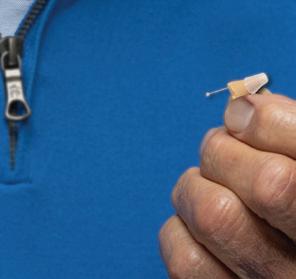




















Essential tips to protect your family before, during and after the storm
Hurricane season has begun, with peak storm threat from mid-August to late October. Be prepared with these tips from ready.gov.
Know your risk. Learn how hurricane-force wind and water could affect where you live.
Make an emergency plan. Share it with everyone in your household.
Gather supplies. Include medication, disinfectants, cloth face coverings and pet supplies in your go-bag or car trunk.
Know your evacuation zone. You may need to leave quickly. Get warnings and alerts. Download the Federal Emergency Management Agency app and receive realtime alerts from the National Weather Service. Sign up for community alerts.
Keep disabilities in mind. If anyone in your household has special needs, determine if you may need additional help.
Review important documents. Make sure your insurance policies and identification are up to date. Make copies and keep them in a password-protected secure digital space. Strengthen your home. Declutter drains and gutters, bring in outdoor furniture and consider hurricane shutters.
Get tech ready. Keep your cellphone charged when a hurricane is in the forecast and buy backup charging devices. Help your neighbors. Check with those who may need help. Stay informed. Listen for emergency information and alerts. If told by local officials to evacuate, do so immediately. Protect yourself. During high winds and flooding, take refuge in a designated storm shelter or interior room on the highest level of the building.
Don’t walk or drive through floodwaters. Just 6 inches of fastmoving water can knock you down. One foot can sweep your vehicle away. Stay off bridges.
Source: ESFI.org
Staff
COMMUNICATIONS COORDINATOR Conley Bourgeois
ACCOUNTING MANAGER Beth Fraser
Board of Directors
President Michael Heinen
Vice President Roger Dale DeHart
Secretary/Treasurer Richard Sitman



ALEC Members
BEAUREGARD
Mike Viator
CLAIBORNE
Mike Marcotte Lane Davidson DEMCO
Daniel Berthelot Richard “Dickie” Sitman
JEFF DAVIS
Michael Heinen Byron Hardee SOUTH
Trevor Benoit Roger Dale DeHart
Joe Jarrell Dennis Glass
Associate Member


Page 12




Donald Bush | District One
Ricky Deggs | District Two
J.R. Hickman | District Three
Alan Dane Slaydon | District Four
Jeff West | District Five
Dan O’Dell | District Six
Doug Sonnier | District Seven
Jeron “Scott” Kyle | District Eight
Tommy Cryar | District Nine
BEAUREGARD ELECTRIC CO-OP LEADERSHIP
Mike Viator | General Manager
Kay Fox | Vice President of Marketing and Member Services
Kelly Lewis | Vice President of Finance and Corporate Services
Kevin Aycock | Vice President of Engineering and Technical Services
Bobby Brown | Vice President of Operations and Construction Services
BEAUREGARD ELECTRIC OFFICES
Main office
1010 E. 1st St. DeRidder, LA 70634
Phone: 800-367-0275
Moss Bluff
975 N. Perkins Ferry Road
Lake Charles, LA 70611
Phone: 337-855-6684
New Llano
12542 Lake Charles Hwy. Leesville, LA 71446
Phone: 337-239-3451
www.beci.org
Volume 42, Issue 4
Louisiana Country (USPS 473-180) is published bimonthly by the Association of Louisiana Electric Co-ops Inc., 10725 Airline Hwy., Baton Rouge, LA 70816, in partnership with Pioneer Utility Resources.
Annual Subscriptions: Members $2.59. Nonmembers $5.
Postmaster: Send form 3579 to 10725 Airline Hwy. Baton Rouge, LA 70816.
Periodicals postage paid at Baton Rouge, Louisiana 70821 and additional mailing offices.
We have been discussing the 1803 Generation and Transmission Cooperative for several years. Now that we receive our electricity from them, here are some helpful facts and observations about our partnership.
About five years ago, our board of directors and staff anticipated that in April 2025 our 25-year power supply contract would come to an end, prompting the need for planning. Beauregard Electric Cooperative Inc.—along with other co-ops across the state—began exploring options. One possibility was to create a new cooperative for Louisiana with the sole purpose of providing electricity to its members under a not-for-profit model, similar to what many other states have done. After careful evaluation, this option was chosen as the best path forward.
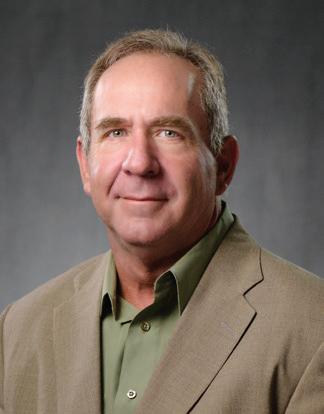
Truthfully, it was an ambitious undertaking built from the ground up.
The co-op was formed, and a board of directors was established—consisting of two representatives from each member co-op—and immediately began planning. CEO Brian Hobbs was brought in to lead the effort.
Brian brings more than 40 years of experience in the G&T industry. Honestly, I don’t think there was anyone better suited to accomplish what Brian has done for us and 1803. Under his leadership, the board navigated the overwhelming number of filings, contracts and partnerships required to bring this vision to life.
Brian then hired Ron Repsher as chief operating officer. I could elaborate on both men’s achievements, but I doubt I could do them justice—and I imagine neither would want me to try. Suffice it to say, they are brilliant with servant hearts, a combination that makes all the difference. We are fortunate to have them, and they have built a team second to none.
All of this leads me to believe the future of BECi’s power supply is bright.
In just the first couple of months, we have seen the advantages of having a supplier that is service-oriented and not-for-profit. In comparison, our power bills have been lower than those from our previous supplier, and that savings is passed directly to BECi members.
The cost per kilowatt will fluctuate, as it always has, and we will still face seasonal challenges and market shifts—just as everything does—but all the data indicates those fluctuations have trended lower, and we fully expect that trend to continue.
Additionally, since 1803 follows natural gas pricing rather than coal, we will no longer have to pay the environmental charge.
BECi and 1803 are also developing plans to strengthen transmission assets to improve grid reliability.
I hope you share my excitement and optimism for the future of BECi’s power supply— in terms of cost savings for members and potential reliability improvements. This transition has been a long time coming, and now that it’s here, it has lived up to—and even exceeded—expectations in many ways.
A great deal of credit goes to our board of directors and former General Manager Kevin Turner for their vision and dedication in bringing this to fruition. I, along with BECi members, will reap the benefits for years to come.
Fun fact: The name 1803 comes from the year of the Louisiana Purchase.
Beauregard Electric offers its members an opportunity to win the co-op’s Lucky Account Number Contest by publishing four account numbers somewhere on Pages 20-21 of Louisiana Country. The account numbers are listed within the story on those pages, not on the magazine cover. To win, you must locate your account number (listed on your electric bill) on these pages and then contact the co-op. To claim your prize, call 800-367-0275 or 337-463-6221 by Aug. 15.

The preacher stood in the middle of the muddy red clay road, staring at the problem straight ahead. It was a long way from his pulpit, so he had no idea he would preach “his best sermon” right here in a few minutes.
This preacher standing in the middle of the road was Kenneth Hodges, my pastor as a teenager. He was a tall and lanky man— skinny with a prominent Adam’s apple, a long nose and unruly black hair. To me, he looked like a character from a Norman Rockwell painting.
He was also the most down-to-earth pastor I’ve ever known, which is why everyone in Dry Creek loved him. He was a “what you see is what you get” kind of person.
However, his physical appearance wasn’t what made him special—it was his loving spirit and kindness toward everyone. He became our pastor in the early 1970s and soon after that became “the pastor” to everyone in the community—whether they were churchgoers or not. He had a great ability to connect with all types of people, and that is why he was revered by so many.
Brother Hodges could preach a good sermon. However, what he did best was pastor. He cared about people, and it showed daily in dozens of kind acts. I’ve always believed the following story of kindness was his best sermon.
On the Monday of this story, Brother Hodges was dressed up in his best suit. I can still see it—a white leisure suit with blue stitching and buttons and white patent leather shoes. When he wore it, I always told him he looked like the Easter Bunny.
He was going into town to a meeting at the Baptist Association office, but first, he planned on dropping by the home of an elderly congregation member. To do this, he bypassed the highway and went onto Joe Gray Road.
Country people can understand what I’m saying here— nothing is worse than a red clay road after a rain in the winter months. Joe Gray Road was that type of road. It was a full-time job keeping his old Buick between the ditches, and navigating around a slick curve, Brother Hodges came upon a problem on the road.
One of the local farmers stood in the road trying to round up three horses that had broken through the fence. The horses were definitely winning. If you’ve ever tried to re-fence animals after they’ve escaped from confinement, you can picture the futility and frustration of this farmer.
Brother Hodges stopped his vehicle. I’m not sure what he thought, but I know what I’d have thought, “There is no way I’m going to get all muddy in my suit.”
However, that’s just what he did. He got out, joined the rodeo and helped get the horses back behind the fence. After the chore was finished, the suit was no longer white. In fact, it and the shoes were caked with red mud and ruined—never to be worn again.

Brother Hodges didn’t tell this story to anyone—he didn’t have to. The farmer—not a church-going man—told it at the post office, which was a clearinghouse of rural information.
Everyone who heard the story in Dry Creek told it to someone else. In a few days, everyone knew the story of the Baptist preacher helping to round up the horses. It’s true that bad news travels fast, but good news also travels well.
I’ll always believe it was his best sermon at Dry Creek Baptist Church. It was a sermon preached in love and with willing hands and feet—a sermon that lives on in my heart and mind. It’s the type of story that bears repeating. So, pass it on.
Kenneth Hodges was my pastor during the most formative years of my life.
Honestly, I cannot remember one specific sermon he preached from the pulpit. However, the sermon on the muddy road lives on—as it should.
A sermon preached on a muddy country road.
Brother Hodges’ best sermon.
A few years after the rodeo on Joe Gray Road, Brother Hodges died in an accident in Dry Creek. His death occurred as he was doing what he did best—helping others. He is still remembered and loved by those of us who knew him.
John 15:13 says, “Greater love hath no man than this that a man lay down his life for his friends.”
Join Curt as he reads this story on the Creekbank YouTube Channel at curtiles56, or listen to the Creekbank Podcast.

Curt Iles lives in Central Louisiana. He is a graduate of Louisiana College and McNeese State University. He has served as a teacher, coach, principal, camp director, missionary and writer. To see more work by Curt, visit www.creekbank.net.



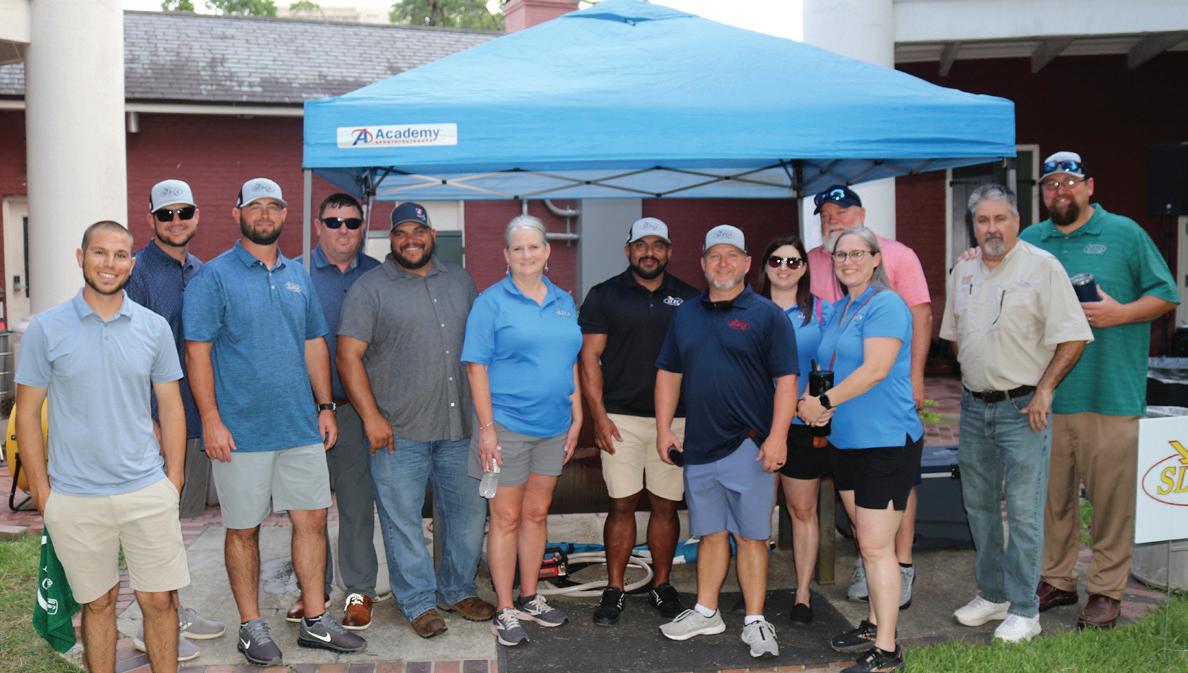




Association of Louisiana Electric Cooperatives and members hosted the Taste of Louisiana Cookout for elected officials. The afternoon was spent at the Capitol meeting with legislators and ended with some Louisiana home cooking.

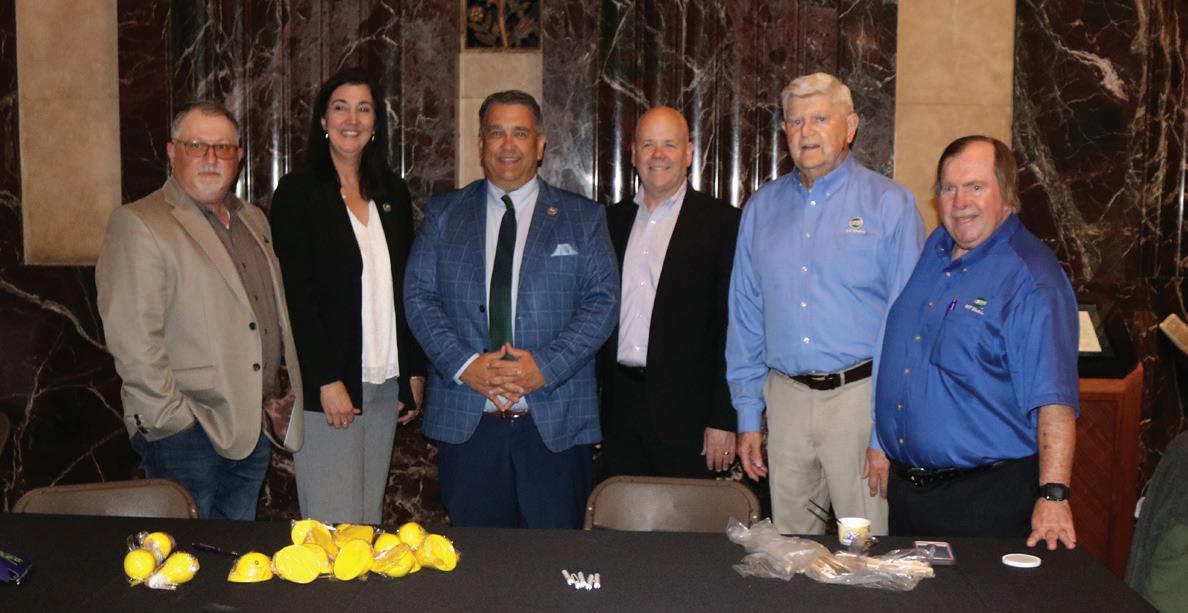








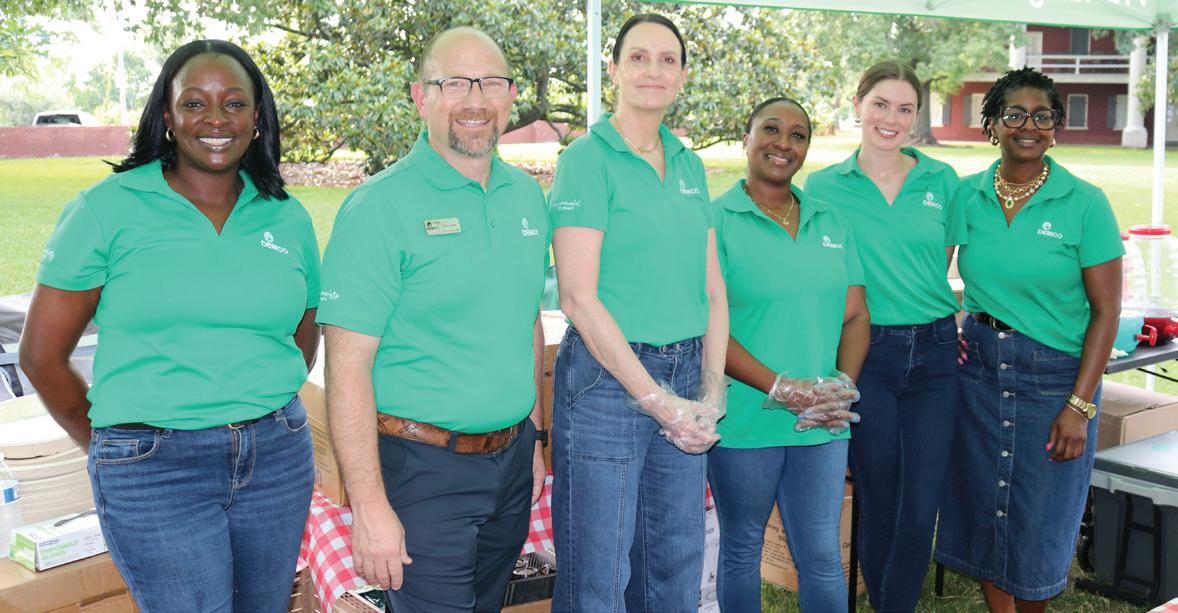
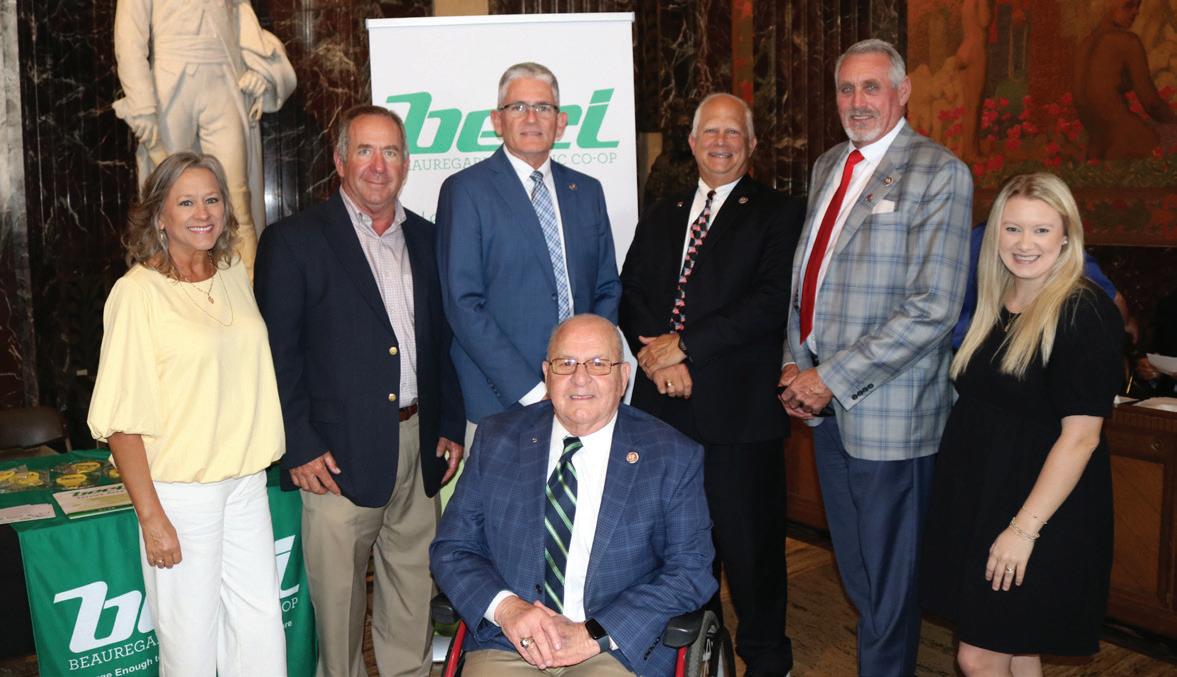

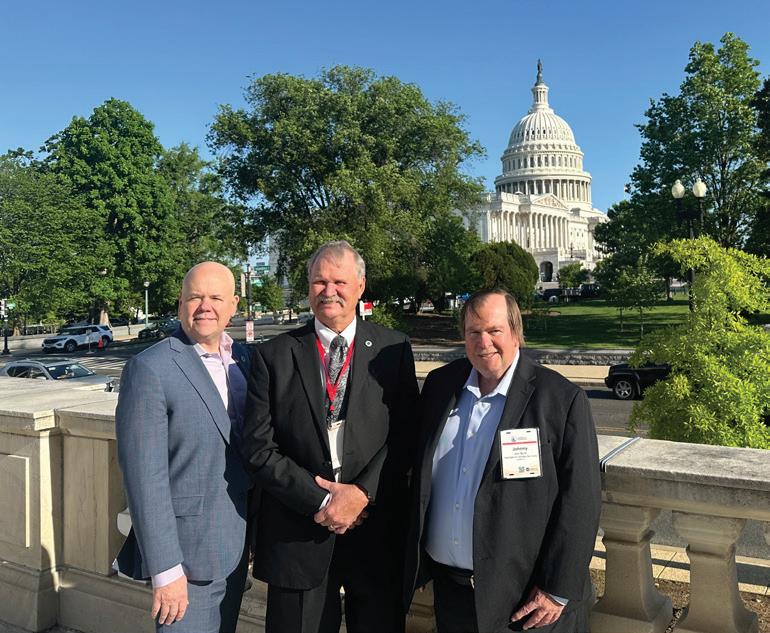
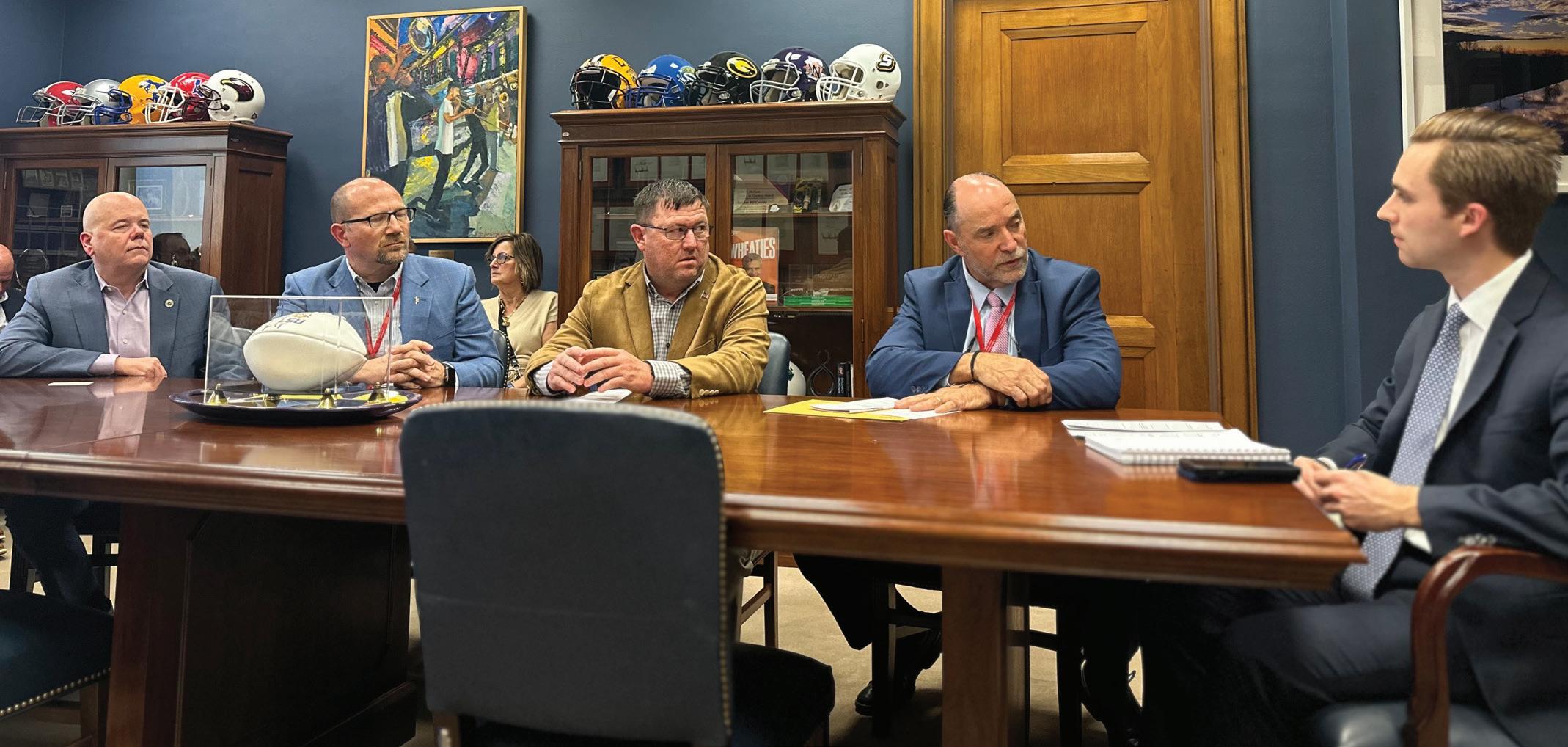
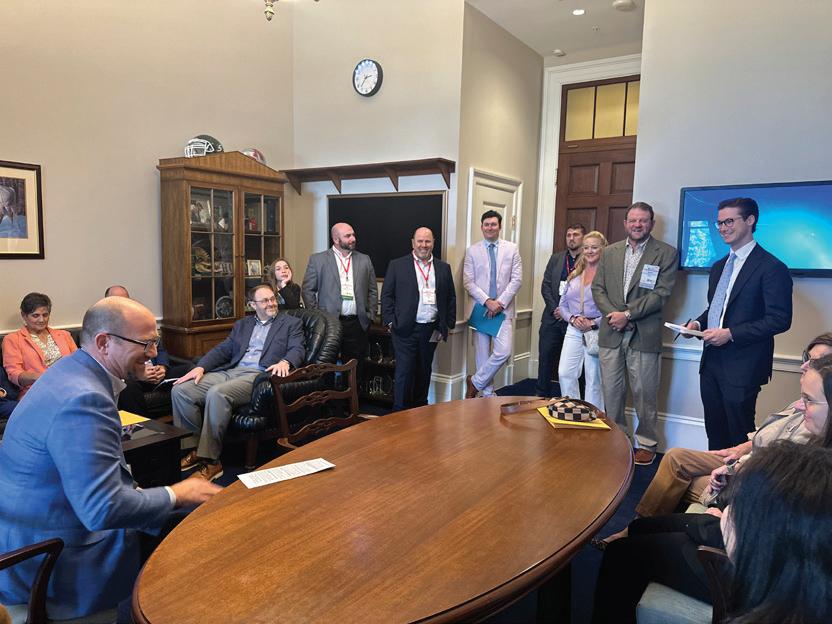

Louisiana electric cooperative leaders met in April with the state’s congressional representatives in Washington, D.C., to discuss topics important to the memberconsumers they serve. The visit coincided with the National Rural Electric Cooperative Association’s Legislative Conference, which welcomes cooperative grassroots advocates from across the country to the nation’s capital each year.














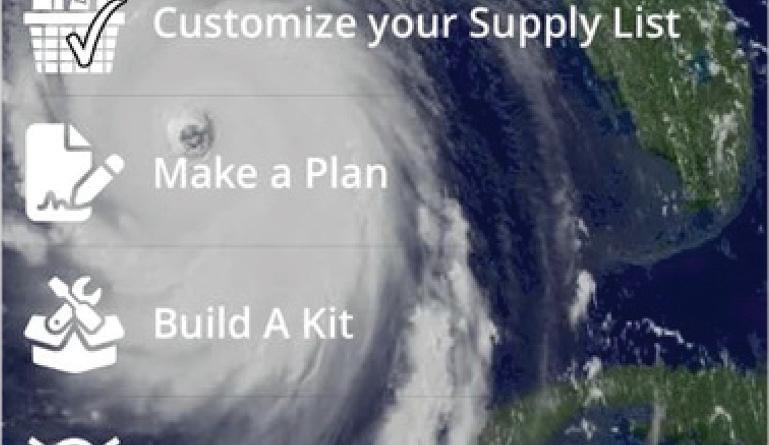
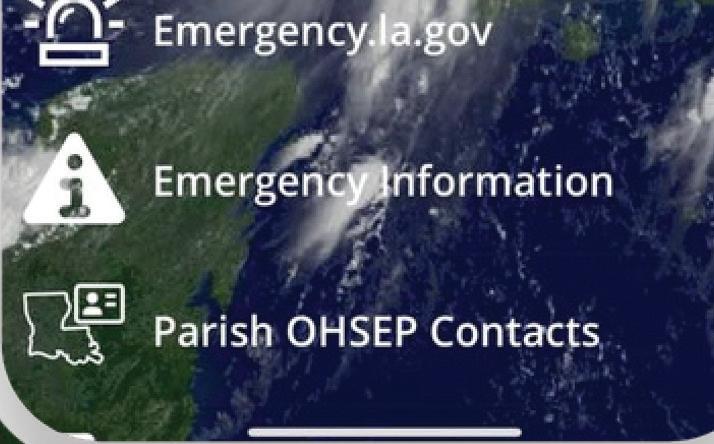






T h e L A G e t A G a m e P l a n A p p i s t h e o f f i c i a l e m e r g e n c y p r e p a r e d n e s s m o b i l e a p p
p r o v i d e d b y t h e L o u i s i a n a G o v e r n o r ’s O f f i c e o f H o m e l a n d S e c u r i t y a n d
E m e r g e n c y P r e p a r e d n e s s (G O H S E P ) .
T h i s a p p a l l o w s L o u i s i a n a r e s i d e n t s t o a c c e s s e m e r g e n c y i n f o r m a t i o n o n t h e g o
a n d g e t p r e p a r e d p r i o r t o a n e m e r g e n c y h a p p e n i n g . U s e r s c a n p r e p a r e
c u s t o m i z e d e m e r g e n c y p l a n s , r e v i e w t h e L o u i s i a n a E m e r g e n c y P r e p a r e d n e s s
G u i d e , a n d g e t u p - t o - d a t e i n f o r m a t i o n a b o u t e v a c u a t i o n s . T h e a p p e v e n a l l o w s
R e a l - t i m e n o t i f i c a t i o n s a r e s e n t d i r e c t l y t o t h e d e v i c e f r o m G O H S E P t o p r o v i d e t h e m o s t u p - t o - t h e - m i n u t e i n f o r m a t i o n f o r r e s i d e n t s . I N F O R M AT I O N F R O M - H T T P S : // W W W. G E TA G A M E P L A N . O R G DOWNLOAD THE APP NOW TO MAKE A PLAN! r s e u e v y e
s s e m h
y o u t o n o t i f y f a m i l y a n d f r i e n d s t h a t y o u a r e s a f e i n t h e e v e n t o f a n e m e r g e n c y.


































By Cheré Coen
It’s no surprise that Nadie Burrell learned to cook in her family’s kitchen. Louisiana is known for producing great cooks and chefs who began their careers at home, whipping up indigenous cuisine.
Nadie hails from a large family in Gray. Growing up, cooking wasn’t just a necessity—it was also an art form. She watched her grandfather cook outdoors, slaughtering hogs and producing pork products while her grandmother reigned over the kitchen. The couple had eight children and 20-plus grandkids, so food was a major part of their lives.


“It was a family love language,” Nadie says. “It was what we did when we got together. And there was a lot of us.”
Church was another place Nadie learned about good cooking. She mirrored the older ladies in the kitchen who never kicked her out.
“I lived in that kitchen,” she says.
Nadie moved to Houston in 2018 and decided to give her new community a taste of her home. Or HomeAh! as she named her new company, a play on words of the larger town near Gray.
Houston offered lots of opportunities for pop-up cooks such as herself, Nadie says. For instance, many bar and lounge owners wanted to provide their patrons boiled seafood but didn’t want the mess and liability of doing it in-house. Nadie would load up her car or a rented U-Haul with propane tanks, pots and ingredients and serve her boiled seafood on-site.
“I gave Houston a taste of my home,” she says.
Until COVID-19 hit, followed by Hurricane Ida.

Nadie worried her community back in Louisiana wasn’t getting the resources it needed, so she headed home. She opened a restaurant, called NadieB’s Taste of HomeAh, in a building in Gray where her grandmother used to work. It seemed appropriate.
“I saw there was a need to help my community,” Nadie says. “It just felt like I needed to come home.”
NadieB’s menu is diverse, featuring seafood boiled seasonally, and street food, like sandwiches and po’boys. Soul food dishes, like oxtail, smothered okra, and collard or mustard greens, are always part of the lunch special.
One of NadieB’s most popular sandwiches is the Bayou Club, which features fried shrimp and fish, lettuce, tomato, and grilled onion.
“It’s the perfect combination of simple things,” Nadie says.
Restaurant visitors also find shrimp pasta, red beans and rice, pork chops, chicken wings, crawfish mac and cheese, and fried fish, among other entrees. Nadie’s seafood rolls consist of Louisiana crawfish, shrimp and crabmeat that’s mixed with cheese, rolled up and fried like an egg roll.
“It’s pretty delicious,” Nadie says.
On Saturdays, NadieB’s serves breakfast from 8 a.m. to noon with a special price of $8 for seniors.
“We try to do this for our seniors, to give something back,” Nadie says.
Nadie offers her take on crawfish étouffée below.
NadieB’s Taste of HomeAh! is open 11 a.m. to 7 p.m. Tuesday through Friday and 8 a.m. to noon Saturday. The restaurant is at 3059 W. Main St. in Gray.
1 stick plus 4 tablespoons butter or ½ cup vegetable oil
1 clove minced garlic
Holy Trinity (½ cup each of chopped onion and bell peppe and 2 chopped celery stalks)
½ cup all-purpose flour
Seafood broth or stock
½ can Rotel tomatoes (hot or mild)
Louisiana crawfish tails
Cajun seasoning
Garlic powder
Onion powder
Chopped green onion
Louisiana rice
Add 4 tablespoons of butter or ½ cup vegetable oil to cast-iron skillet. Once hot, add garlic and the Holy Trinity. Cook vegetables until translucent, about 5-6 minutes. Remove from skillet and set aside.
Reduce heat to medium, and add 1 stick of butter to cast-iron skillet. Once melted, add flour. Use a whisk to combine butter and flour. Whisk until it is smooth and golden brown. This is called a blonde roux. Stir continuously, or the roux will burn.
Add seafood broth, whisking until it is smooth, until the roux’s consistency is to your liking. Add vegetables to the roux. Add half the can of Rotel tomatoes. Season to taste with Cajun seasoning, onion powder and garlic powder.
Add crawfish tails to the seasoned roux. Stir. Cook on medium heat for 8-10 minutes. Reduce heat to low and simmer for 5 minutes. Remove from heat, and top with green onions. Serve over hot rice.

From the earliest days of electricity, weather has presented the greatest challenge to electric grid reliability and safety. Severe thunderstorms, tornadoes, hurricanes, heat waves, heavy snowfalls, flooding and high winds have long tested power lines and electric utility crews across the country. But in Louisiana, hurricanes are known intimately—they’re not just statistics. They’re memories etched into communities. From Betsy in 1965 to Katrina in 2005, and more recently Gustav, Ike, Laura, Delta and Ida, each storm has revealed the vulnerability of electric infrastructure.
If it seems like storms are becoming more frequent and intense, you’re not wrong. The National Oceanic and Atmospheric Administration, which tracks weather and climate disasters causing more than $1 billion in damage, reported an annual average of 18 such events between 2018 and 2022. That compares to an average of just 8.1 major disasters per year from 1980 to 2017, even after adjusting for inflation.
Louisiana has endured more than its share of these costly disasters. Hurricane Ida alone left more than 1 million Louisianans without power in 2021, with some rural areas remaining dark for weeks. Winds topping 150 mph turned everyday objects into projectiles and uprooted centuries-old live oaks that crashed into power lines.
While scientists and policymakers debate the causes of extreme weather, electric utilities are focused on preparing for it. Across the Bayou State, electric cooperatives take steps to harden the infrastructure that delivers electricity to homes, farms and businesses. This includes upgrading equipment and strengthening connections to the nation’s power grid to better withstand disasters.
Coastal parishes face unique threats—not just hurricane-force winds and rain but also storm surges that push saltwater miles inland. Salt left behind can corrode equipment and cause failures long after the storm passes. Additional strategies aim to prevent damage from happening in the first place.
You may have noticed an emphasis on tree trimming and vegetation management. Keeping branches a safe distance from power lines reduces outages caused by limbs falling during storms. In hurricanes, Louisiana’s beloved live oaks, cypress trees and even palm fronds become airborne hazards. After storms, crews often find massive limbs draped across power lines or entire trees tangled in transformers. It’s sad to see favorite trees trimmed, but many of the outages occur when trees tangle with power lines.
As drought conditions cause increased wildfire risks, even in places unaccustomed to them, these preventative efforts become even more important.
Grid hardening also involves inspecting poles and replacing weakened ones with more durable materials. If one power pole is damaged or otherwise weakened, strong winds might bring it down and leave a big area in the dark.
When crews aren’t fixing problems, they’re working just as hard to prevent them from happening. Those poles and the wires connecting them are frequent targets for lightning, so utilities install lightning arresters to divert surges caused by lightning strikes. Hurricane-spawned tornadoes and severe thunderstorms can produce intense lightning activity, making these protective systems essential for maintaining grid stability during dangerous storms.
Investments are being made in sophisticated management systems—what some call smart grid technology—capable of identifying and addressing issues before they become widespread outages. Automated devices like reclosers can isolate problems and maintain power in unaffected areas. These systems even help defend against outages caused by curious wildlife that may come into contact with equipment.
Advanced hurricane tracking from the National Hurricane Center in Miami allows Louisiana’s cooperatives to pre-position crews and equipment days before a storm makes landfall. For example, when Hurricane Francine approached the Louisiana coast, mutual aid crews from as far away as Arkansas and Texas were already staged and ready to assist in restoration.
Reinforcing substations and other important outdoor equipment to better withstand weather events has also been a focus.
Storms don’t just affect local power. Weather extremes in one part of the country can significantly affect energy availability and costs elsewhere.
When hurricanes disrupt Louisiana’s energy infrastructure— including the refineries along the Mississippi River and natural gas facilities in the Gulf—the effects ripple across national energy markets. After Hurricane Ida, gasoline prices spiked nationwide as Louisiana’s refineries slowly came back online.
Every investment in prevention reflects utilities’ dedication to keeping the lights on when it’s needed most. As hurricane seasons grow longer and storms intensify, Louisiana’s electric cooperatives remain committed to building resilient infrastructure communities need to weather whatever nature sends their way. n



























Hurricane season in the United States runs from June 1 through Nov. 30. As the intensity and frequency of storms have increased over the past decade, electric cooperatives whose territories are vulnerable to hurricanes have worked to improve their systems to minimize damage and disruption from high winds and flooding, and speed up recovery times. Here are some of the key measures co-ops take to harden the grid:
Conduct regular trimming and removal of trees within rights-of-way.

Install devices that divert surges from lightning strikes to keep power flowing.
Deploy “self-healing” systems like distribution automation and fault location, isolation and service restoration to minimize the scope and duration of outages.
Replace standard conductor with larger-diameter, coated “tree wire” to resist damage from wind and tree limbs.
Pad-mounted transformer Sensor Arrester
Pole Underground power lines
Move vulnerable sections of line underground to protect them from high winds and falling trees.
Increase pole inspections and repairs and replace wood poles with higherclass wood, metal or concrete to better withstand strong winds.
Deformed rebar
Pre-stress strand
Internal raceway
When hurricanes or storms cause widespread damage, extended outages are likely. Electric utility line crews work long, hard hours to safely restore service to the greatest number of members in the shortest time possible. Here’s the sequence crews follow when the power goes out.
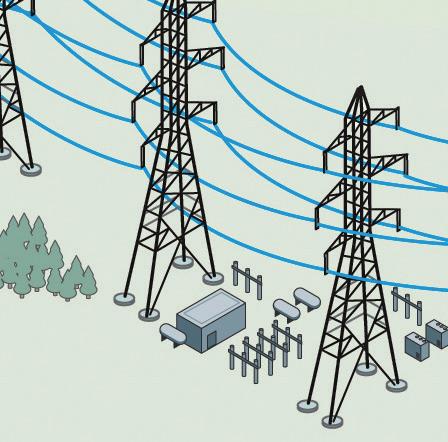
Transmission towers and cables that supply power to transmission substations—and thousands of members—rarely fail. But when damage occurs, these facilities must be repaired before other parts of the system can operate.
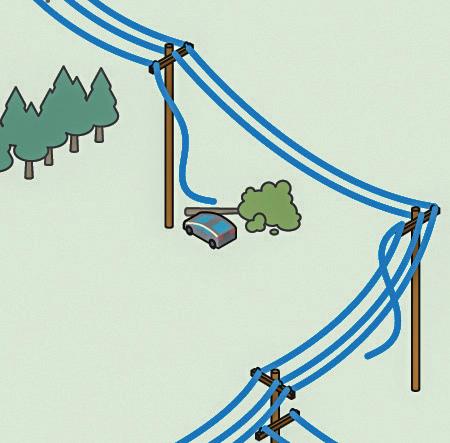
If the problem cannot be isolated at a distribution substation, distribution lines are checked. These lines carry power to large groups of consumers in communities or housing developments.
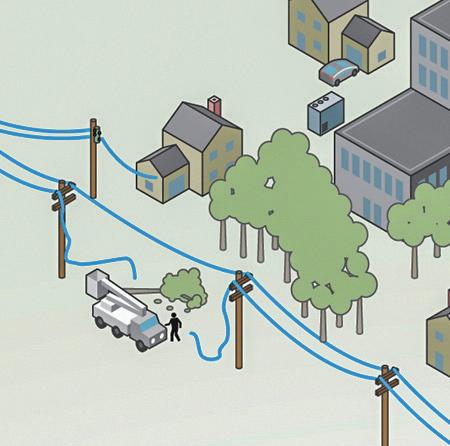
If local outages persist, supply lines—also called tap lines—are inspected. These lines deliver power to transformers mounted on poles or placed on pads for underground service outside businesses, schools and homes.
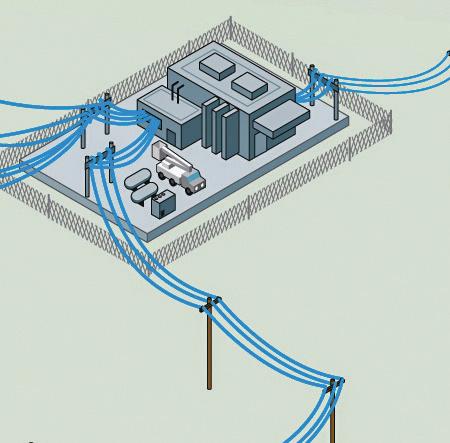
Each substation serves hundreds or thousands of members. When a major outage occurs, line crews inspect substations to determine if problems stem from transmission lines feeding into the substation, the substation itself or if problems exist down the line.
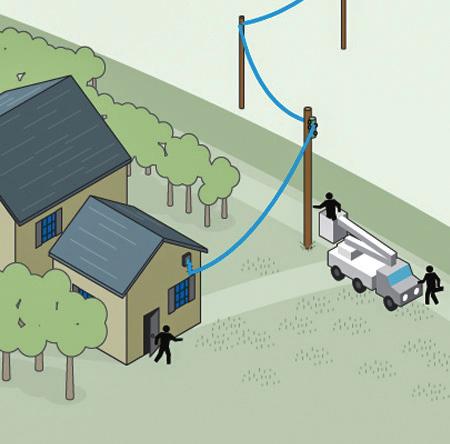
If your home remains without power, the service line between a transformer and your residence may need to be repaired. Remember to report any service disruption to your cooperative—as the informaton is helpful in narrowing down where there are problem areas.
Unfortunately, power outages do occur from time to time. It’s important to know how to keep your food safe during an outage. Use these tips from USDA to help minimize food loss and reduce risk of illness.
power outage
Keep refrigerator at 40° or below. Freeze items like fresh meat and poultry that you won’t use immediately. Keep freezer set to 0° or below. Group frozen foods to help items stay colder longer.
power outage
Keep the refrigerator and freezer doors closed!
If the doors stay closed during the length of the outage:
A full freezer will hold its temperature for 48 hours. 1 2
power outage
Check the temperature inside your refrigerator and/ or freezer.
If the temperatures are safe, the food should be safe to eat.
If you anticipate an extended power outage, buy dry or block ice to keep the fridge and/or freezer cold.
A refrigerator will keep food safe for four hours
Foods that should be thrown out after an extended power outage:
Meat, poultry or seafood products
Milk, yogurt and other dairy products
Cooked or sliced produce
Eggs and egg products
Soft and shredded cheese
Opened baby formula
Dough and cooked pasta
Source: USDA














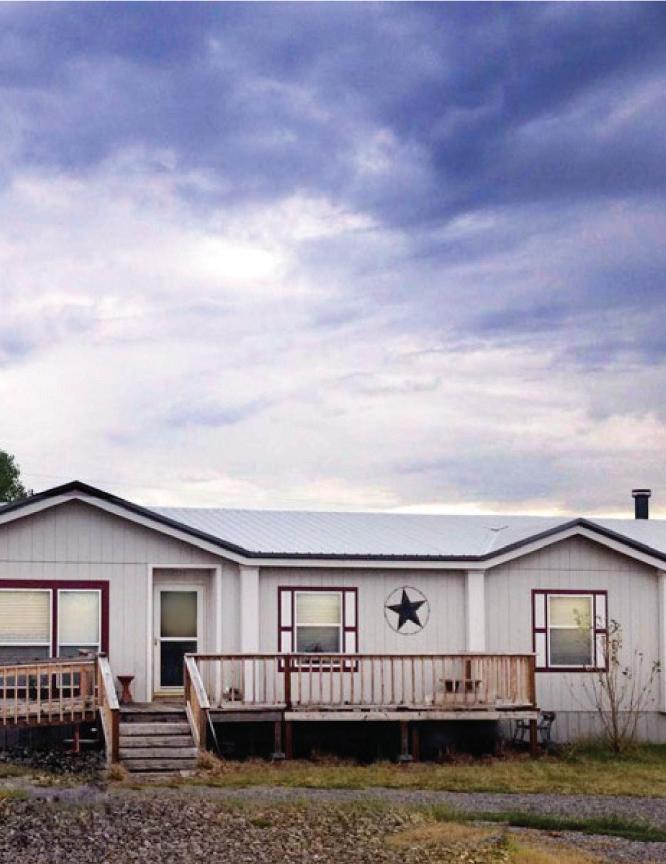






























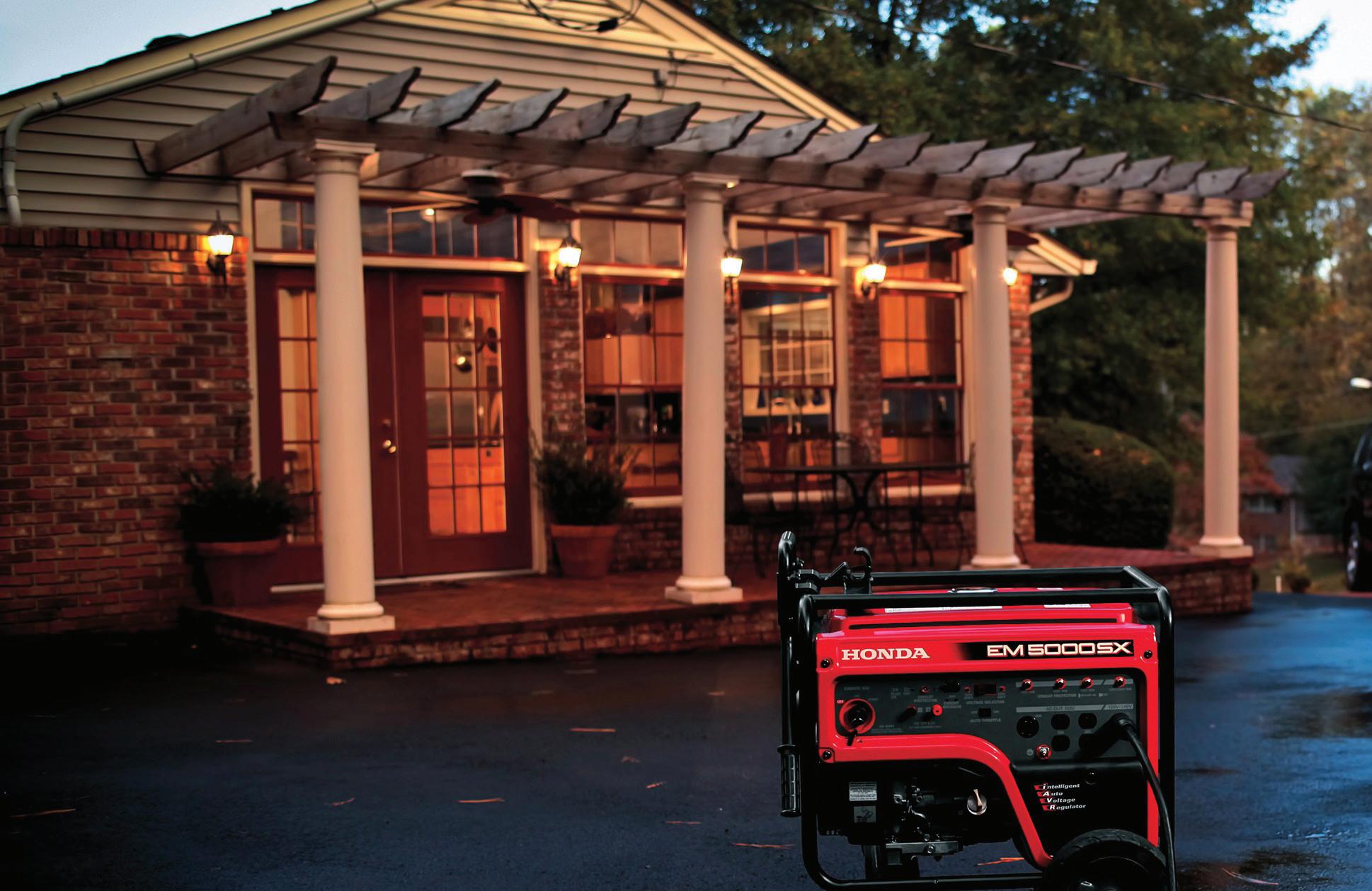


Storm season is upon us, which means greater potential for power outages. If you plan to use a portable generator in the event of an outage, make sure you use it safely.
With proper use and maintenance, portable generators can provide great convenience during an outage. However, generators used incorrectly can be hazardous.
In a 2022 report, the Consumer Product Safety Commission estimated 85 U.S. consumers die every year from carbon monoxide poisoning caused by gasolinepowered portable generators.
Here are safety tips to keep in mind when using portable generators:
• DO: Install backup CO alarms.
• DO: Keep children and pets away from portable generators at all times.
• DO: Position generators at least 25
feet outside the home, and away from doors, windows and vents that can allow CO to enter the home.
• DO: Ensure your generator is properly grounded. Use a portable ground fault circuit interrupter to prevent electric shock injuries.
• DO: Use three-pronged extension cords rated to handle the load of the generator. Inspect extension cords for cuts, frays or other damage before use.
• DON’T: Operate a generator inside your home or an enclosed (or partially enclosed) space. Generators produce deadly levels of CO.
• DON’T: Open windows or doors while the generator is running.
• DON’T: Rely on generators as a fulltime source of power. They should only be used temporarily or in emergency situations



to power essential equipment or appliances.
• DON’T: Overload generators. They should only be used to power essential equipment. Make sure your generator can handle the load of the items you plan to power.
• DON’T: Connect generators directly to household wiring unless you have an appropriate transfer switch installed. If a generator is connected to a home’s wiring without a transfer switch, power can backfeed along power lines and electrocute utility lineworkers making repairs.
While generators provide convenience during power outages, they can quickly become hazardous—even deadly—if improperly operated. Before you operate a portable generator, be sure to thoroughly read the owner’s manual for important safety information and tips.


















By EmmaLee Tingle
With the flip of a calendar page into June, Louisiana officially entered hurricane season. While this season tends to bring feelings of trepidation to residents, knowledge and preparedness can also bring a sense of calm.
Forecasters predict an above-average 2025 hurricane season, according to the National Oceanic and Atmospheric Administration. The prediction estimates 13 to 19 named storms, with six to 10 of those expected to become hurricanes.
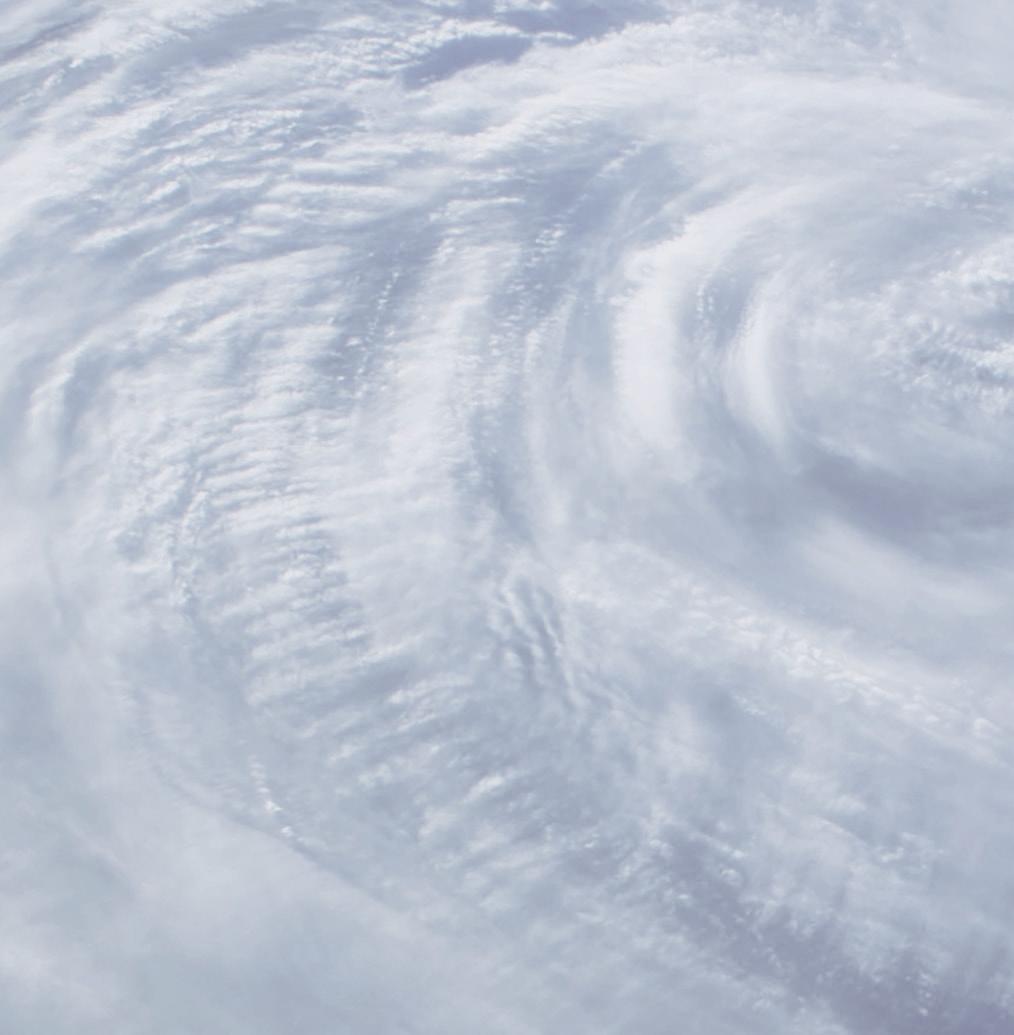
NOAA prediction includes three to five major hurricanes reaching Category 3 strength or higher. Account No. 2298 003
With a 70% confidence level in this forecast, many Louisianans are looking ahead to prepare for a season of storms.
The best time to prepare for a hurricane is before the first storm is ever named. NOAA officials suggest writing or reviewing a family emergency plan, assembling an emergency kit, reviewing insurance policies and preparing homes for storms.
A family emergency plan includes information about each household member. The plan should include names, contact information, Social Security numbers, medical details, and information concerning each household member’s workplace, school or childcare provider. The plan should also include emergency contacts and a designated meeting place in case of evacuation. Review and update your plan regularly with all family members..
Having an emergency kit ready is an important part of hurricane preparedness. It should include enough food, water and supplies to last several days. Water needs can be calculated by assuming each person will need 1 gallon per day for drinking and sanitation. Other items include flashlights, a battery-powered weather radio, extra batteries, a first-aid kit, medications, cellphone chargers, battery backups, soap, disinfectant, blankets, extra clothing and copies of important documents. Account No. 76296 002

Families with infants or pets should include specific supplies, such as diapers, wipes, formula and pet food.
Emergency kits should be stored in a sealed plastic or metal container and kept in a cool, dry place. All family members should be



aware of the kit’s location. Before hurricane season each year, inspect all items in the kit and replace anything that’s expired. As family needs change, update the kit with relevant items and information.
If a hurricane poses an imminent threat, families should have an evacuation plan in place. This plan should include a place to stay outside of the storm’s path. Having a primary evacuation route and an alternate route are important parts of this plan.
Preparing a home for a hurricane is also a good idea. Early in the season, trim trees and branches that could fall during high winds. If storm threats become serious, secure outdoor items such as patio furniture or bring them inside. Have materials on hand to board up windows as a protection against debris flying in hurricane-force winds. Account No. 12795 002
Secure doors, paying special attention to garage doors, which are often the most vulnerable. If possible, vehicles should be moved into a garage or to a more secure location.

possible, major restoration efforts can take time. During extended restoration times, many members rely on generators for temporary power. While generators are wonderful tools, members should always use them safely. Make sure you follow these guidelines:
• Make sure you have adequate fuel.
• Make certain the generator’s capacity is greater than the total electric load being placed on the unit.
• Never operate a portable generator indoors or in an enclosed space. Account No. 109932 001
• Always keep the generator at least 20 feet from a home.
• Always keep a generator away from the home’s windows and doors, and point the generator’s exhaust away from the home.

In the aftermath of a hurricane, widespread power outages are possible. While we would like to assure our members that we will restore power as quickly, efficiently and safely as

• Make sure the generator has 3-4 feet of unobstructed area in each direction for proper ventilation.
• Use only grounded cords used, and inspect them before use.
• Make sure to start and stop the generator only when no electric load is attached.
• Always use ground-fault circuit interrupter protection.
Although hurricane season can bring past memories and elicit a fear of the unknown future, it’s a good time to review household and family storm plans. Taking these steps toward preparedness can help keep families safe in a volatile season.






By Christina Sawyer
When it comes to maintaining safety and preventing service interruptions, your electric utility is committed to doing its part. That includes performing dig locates for consumers who call the 811 Call Before You Dig service. But safety doesn’t stop at the locate. It’s crucial for everyone take personal responsibility to dig carefully, remain cautious and contact your co-op immediately if any lines are accidentally hit. Remember, even with the best technology and the most diligent efforts, some risks simply cannot be predicted.
The first step in any digging project—whether you’re planting a tree, installing a fence or setting up a mailbox—is to call 811. This free service alerts utilities in your area to mark underground lines with flags, paint or stakes. This crucial step helps you avoid hitting underground lines and protects yourself, your neighbors and the infrastructure that keeps our communities powered.
The process is simple: Call 811 or submit a request online at least two business days before you plan to dig. After that, a representatives visits your site and marks the approximate location of underground lines. Each type of utility line is marked with a different color—electric lines are typically marked with red. This visual guide is your map to digging safely.
Even after a locate, the work isn’t over. The lines marked on your property are approximate. While the markings give a general idea of where the underground lines lay, there is still room for error. That’s why we urge you to dig with care, especially when you’re within a few feet of any markers.
Hand tools, such as a shovel, should be used within this area. This might slow down your project, but it significantly reduces the risk of accidentally hitting a utility line. If you’re using heavy equipment, be extra cautious and consider using spotters or soft digging techniques to further minimize the risk.
Underground utility lines can shift over time due to erosion,

temperature changes and soil movement. Even with a locate, you could encounter lines in unexpected places. Additionally, lines may not be as deep as expected due to changes in the landscape over the years, such as soil erosion or excavation work done before the current standards were enacted.
Furthermore, not all lines are owned or maintained by your local utilities. Private lines, such as those running from the meter to your home or shed, might not be marked during a locate. The owner is responsible for knowing the location of these lines and digging carefully around them.
When you call 811, state-of-the-art mapping and detection tools are used to pinpoint the location of underground lines. These maps are developed based on detailed records and regular updates, but they’re only as good as the information available. That’s why digging carefully is essential, even when you think you know where every line is located.
The Responsibility of Digging
As a member of a community, you share the responsibility of maintaining community safety. Digging is no small task. It requires awareness, caution and a willingness to follow the right procedures. Should you hit a power line or any other utility line while digging, cease all work and contact your co-op immediately. Do not attempt to repair or inspect the damage yourself. We have trained personnel and specialized equipment to handle the situation safely.
Inspiring a Culture of Safety
Safety is not just the responsibility of your cooperative; it’s a shared duty each of us carries.
When you plan your next digging project, remember a little extra caution can prevent accidents, outages and even save lives. By calling 811, following the locate markings and digging carefully, you contribute to a safer, more reliable community for everyone.
Let’s work together to keep our power flowing and our neighborhoods safe. Dig smart, dig safe and always reach out if you’re unsure. We’re here to help you every step of the way.


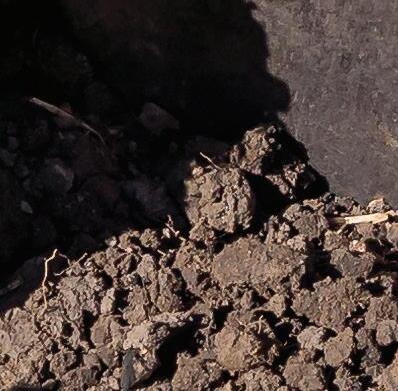
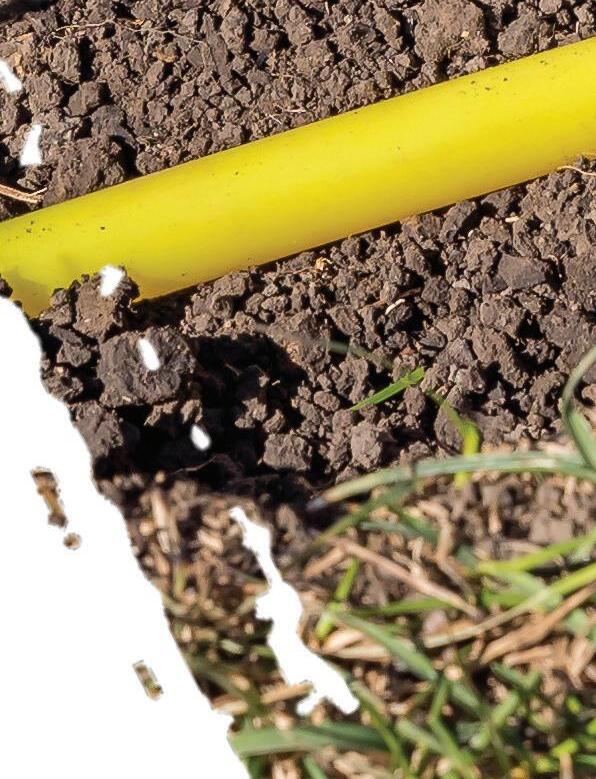
When you call 811, a representative visits your site to mark the approximate location of underground infrastructure, such as buried gas and electric lines. ADOBE




If you suspect you’re dealing with a utility scam, it’s crucial to slow down and take your time before taking any action.
Scammers will often pressure you to make quick decisions or immediate payments. Instead, take the time to verify the legitimacy of the communication by contacting your cooperative directly.
Use a phone number from a reliable source, such as your bill or the co-op’s website. Taking this simple step can help protect you from falling victim to utility scams.
Source: Utilities United Against Scams